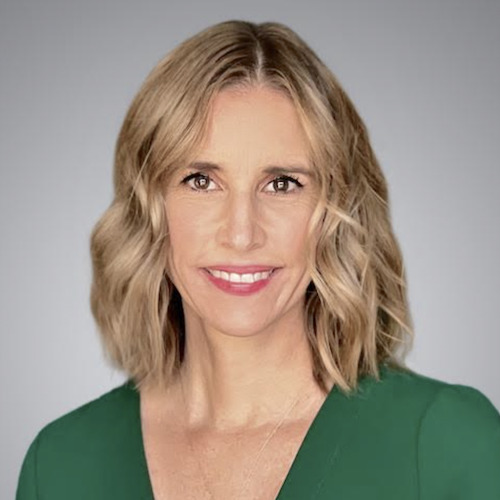
More than a year and a half ago, when I shared with my friends and family that I would be leaving a leading early education company to join a growing senior living-related company, the reactions ranged from incredulous to ominous. Friends warned that it wasn’t that easy to change industries, mentors advised that I do my research, and the general feedback was something along the lines of “Are you sure you want to do this? It seems so different!”
And although I took their advice to heart, studying the demographic trends and reading books about aging, the transition has been surprisingly simple. In fact, although the verticals may appear to be divergent — the ebullience of childhood set against the quietude of old age — they are more similar than I ever would have imagined.
In my role as chief growth officer, there are a few lessons I’ve learned from early education that have shaped how I think about marketing and growth in senior living:
Quality of care is opaque: One of the unseen challenges that consumers face when exploring both early education and senior living is recognizing quality care during the family tour. Because the average consumer doesn’t fully understand the cognitive principles that drive care in either industry, it’s very easy to miss indicators of quality. Although physical attributes such as decor and amenities are easy to see, other aspects of quality senior care, such as a sense of community, quality staff or strong engagement programming, are harder to spot. As a result, consumers may focus too much on things such as design and decor, thinking of them as proxies for quality care.
As marketers, we need to invest in helping consumers understand what quality senior care actually looks like in practice. This means not only increasing our production of educational content but also training our staff members to point out quality markers when touring.
In early education, we loved highlighting something as simple as art projects that all looked different, as it showed that we encouraged individual creativity in children. In senior living, it might be pointing out a specialized role, such as a director of engagement, to fully illustrate how much investment is made in engagement. After all, how we help consumers recognize quality care is so important to fully realizing the investment that is made every day in senior living staff, training and policy.
The product is a promise: At their core, both the early education and the senior living industries rest on the premise of a promising future — an unwavering assurance that today’s investment yields a better life tomorrow. Parents enroll their toddlers into early education programs with a trust that their little ones will grow to be creative, collaborative and confident. Similarly, the decision to transition into a senior living community rests on a pledge to make the “golden years” truly golden. Whether it’s fostering a child’s development or ensuring a dignified and engaging life for our older adults, both industries essentially sell the promise of a better tomorrow by making a qualitative investment today.
Senior living marketers have a particularly challenging, but important, role to play in expanding the narrative around what a better tomorrow actually looks like for older adults. The industry has made incredible progress in showcasing older adults with style, substance and vitality — but have we represented diversity in our marketing efforts? Can older adults with mobility issues or other challenges see themselves in the pictures we paint?
As the average age of an assisted living resident is 85, we have an obligation to represent the future for those folks with similar verve and vitality as well. The promise of community and purpose are open to everyone, and we can help those who don’t fit the mold of our marketing personas by introducing a new model for healthy, happy and truthful aging.
Changing caregiver complexity: In both industries, the purchase decision often is made or influenced by a family caregiver — most often women. And the complexity of these women’s lives continues to change.
The June Bureau of Labor Statistics report noted a historical peak in the women’s labor force participation rate, and the Pew Research Center shares that women now outnumber men in the US college-educated labor force. Although this demographic shift suggests economic and professional change, the harsh reality is that our societal norms may not have evolved as quickly.
In fact, another Pew study reports that in opposite-sex marriages, women still are picking up more of the household duties and chores. This intersection of forces forms a demanding quartet — juggling child-rearing and elder care responsibilities with household duties and maintaining full-time employment.
Senior living needs to re-imagine our model for family engagement. Although family caregiver interest and engagement are likely to be unwavering, their time, energy and capacity may be waning. For marketing and product teams, how we leverage technology to share daily engagement activities, communicate resident concerns and encourage connection are going to be even more important in the years to come.
Maintaining the mission
The journey from early education to senior living has been engaging, enlightening and so exciting. For as much as the verticals may appear to be different, they have at their core a concern for human health and happiness. And a mission-driven marketer, there’s no higher calling than that.
Christine Healy is the chief growth officer at Seniorly, a senior living technology company that helps older adults and their families find the right senior living for their needs and budget. She has more than 20 years of experience driving growth and acquisitions and has worked in mission-driven sectors, including early education and educational travel in addition to senior living. Healy has worked for two of Fortune Magazine’s “100 Best Companies to Work For.” You can reach her at [email protected].
The opinions expressed in each McKnight’s Senior Living marketplace column are those of the author and are not necessarily those of McKnight’s Senior Living.
Have a column idea? See our submission guidelines here.


